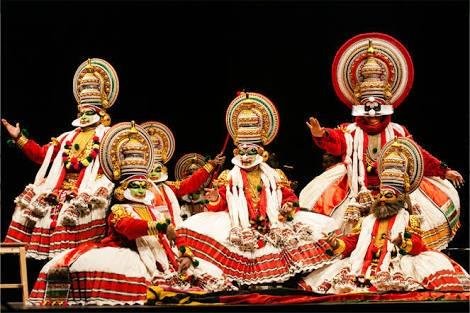Kathakali (Malayalam: കഥകളി, kathakaḷi) is one of the major forms of classical Indian dance. It is a "story play" genre of art, but one distinguished by the elaborately colorful make-up, costumes and facemasks that the traditionally male actor-dancers wear. Kathakali primarily developed as a Hindu performance art in the Malayalam-speaking southwestern region of India (Kerala).
Kathakali's roots are unclear. The fully developed style of Kathakali originated around the 17th century, but its roots are in the temple and folk arts (such as Kutiyattam and religious drama of the southwestern Indian peninsula), which are traceable to at least the 1st millennium CE.A Kathakali performance, like all classical dance arts of India, synthesizes music, vocal performers, choreography and hand and facial gestures together to express ideas. However, Kathakali differs in that it also incorporates movements from ancient Indian martial arts and athletic traditions of South India. Kathakali also differs in that the structure and details of its art form developed in the courts and theatres of Hindu principalities, unlike other classical Indian dances which primarily developed in Hindu temples and monastic schools.
The traditional themes of the Kathakali are folk mythologies, religious legends and spiritual ideas from the Hindu epics and the Puranas. The vocal performance has traditionally been performed in Sanskritised Malayalam. In modern compositions, Indian Kathakali troupes have included women artists,  ![image](https:
![image](https:
Hi! I am a robot. I just upvoted you! I found similar content that readers might be interested in:
https://www.trekearth.com/gallery/Asia/India/South/Kerala/Cochin/photo1543831.htm
Downvoting a post can decrease pending rewards and make it less visible. Common reasons:
Submit